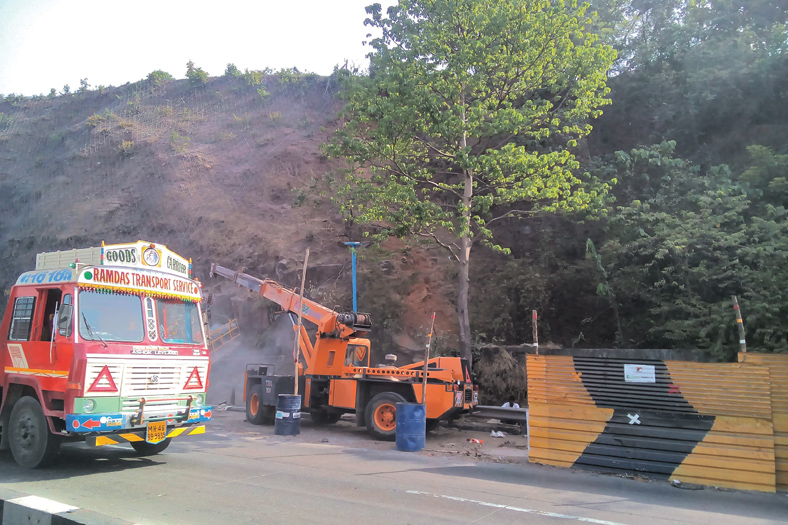Road projects picking up steam, execution remains tepid
In order to meet its target, NHAI will have to award around 3,900 km by end of March, which is an uphill task, ICRA observed
While NHAI awarded 1,572 Km of contracts during 8M FY 15 (Apr-Nov’2014), it had set itself a target of 5,500 Km for FY 15, 35 per cent of which was earmarked for Build-Operate-Transfer (BOT) segment and rest for Engineering Procurement and Construction (EPC) mode. In order to meet its target, NHAI will have to award around 3,900 km by end of March, which is an uphill task. Out of around 3,500 km set aside for the EPC awards during current fiscal, 1,050 km were awarded till November last year. Around half of targeted EPC awards have received all approvals related to environment and right of way (RoW) and therefore can be awarded quickly as opposed to balance 50 per cent, wherein NHAI is still in the process of securing the RoW and other approvals. “Awarding projects after securing all approvals and RoW would significantly reduce the subsequent time overrun as delays in acquisition of RoW and clearances from Ministry of Environment and Forest (MoEF) have been the major reasons for delayed execution in past,” says ratings agency ICRA. Since execution delays result in elongated working capital cycle and reduced profitability due to resource idling, the expected reduction in time overrun is a positive for EPC contractors.
ICRA expects a pick up in the award activity given that the central government has doubled the limit up to which Ministry of Road Transport and Highways (MoRTH) can appraise and approve projects on its own to Rs. 10 billion. Execution rate declined“Overall execution rate declined by 17 per cent to 3.41 km/day during 8M FY 15 from 4.14 km/day during the corresponding period in the preceding year,” ICRA said. Major slippage in execution was during Q1FY 15 when the execution pace slowed to at 3.98 km/day as against 6.04 km/day in Q1FY14 owing to the general elections. The execution during Jul-Nov 2014 stood at 3.08 km/day as against 3 km/day.
“Although the new government has taken several initiatives like delegating the powers for grant of forest clearances to the regional offices leading to possible saving of six to eight months, online filing for clearances to construct rail over bridges and under bridges – both were earlier major bottlenecks, and increasing limits on sand mining, the actual execution is yet to gather momentum,” says Rohit Inamdar, Senior Vice-President, ICRA.
ICRA believes that starting Q1 FY 16, these measures could start yielding positive results, giving a fillip to the pace of execution. Crucial factors While in FY 14, the fall in traffic volume was more than compensated by high growth in toll rates owing to high inflation rate, there has been a trend reversal during current year, with low inflation rate and pick up in traffic volumes. Traffic volumes which witnessed de-growth during FY 14, have picked up during current financial year. However, in the current scenario of low inflation, the road developers could get hit in the short term on account of static or marginally increasing toll rates and no commensurate fall in interest rates. If such an anomaly were to persist over a longer period, it could lead to cash flow mismatches and also affect the profitability of the toll road projects. Mr Inamdar added, “The final regulations for Infrastructure Investment Trusts (InvITs) notified by SEBI in September, 2014 could pave way for long-term project finance and can support private sector participation. InvITs also have benefits in the form of improved liquidity by virtue of being publicly traded, offer better scalability and improved access to capital markets. The challenge now will be to make InvITs a more attractive option through simple tax structure for the investors to park their funds in operating infrastructure assets. This in turn would increase the ability of developers to undertake more infrastructure development projects. In the near term, the funding challenges are likely to persist and the industry is likely to witness consolidation given that many completed BOT projects have been lined up for stake sale by their promoters.” Shorter tail periods resulting from relatively higher leveraging tend to limit the financial flexibility of a project by lowering its refinancing ability in case of stressed cash flows resulting from lower than anticipated toll collections. Mr Inamdar added, “Absence of tail period could potentially lower developer’s interest in the project. Moreover, progress of several projects in the recent past was adversely affected due to delayed equity infusion or extension of funding support by the promoters, given their tight liquidity.” Delays in executionICRA’s analysis reveals that over 80 per cent of the projects witnessed delays in execution. In more than 60 per cent of cases the delay was 6 months or higher and 40 per cent of the projects were delayed by over 1 year. The study shows that for around 40 per cent of the total projects, the debt sanctioned is higher than total project cost (TPC) estimated by NHAI as the project debt is sanctioned based on the developer’s cost estimates which is higher than NHAI TPC by 35 per cent on average. “In such cases, the lenders are exposed to a higher risk particularly in the event of termination of the Concession Agreement wherein NHAI guarantees compensation based on its own appraised project cost and not the developer’s estimate,” the study observed.
Cookie Consent
We use cookies to personalize your experience. By continuing to visit this website you agree to our Terms & Conditions, Privacy Policy and Cookie Policy.









